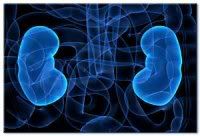Elizabeth McMillan
Northern News Services
Published Monday, August 9, 2010
Because of its links to high blood pressure, and in turn strokes, heart disease and kidney disease, Health Canada recently recommended Canadians cut their sodium intake in half.
 Stanton's employee Gloria Arnburg, left, and food security worker Melanie Keevik, right, discuss cooler space for traditional food in Stanton's Tuk store on Jan. 28, 2010. - photo courtesy of Marc Arseneau |
Melanie Keevik, a food security worker in Tuktoyaktuk with Health Foods North, said often people reach for processed food instead of cooking from scratch and don't think twice about sodium.
"All the canned food, the frozen pizzas, even the wieners and bacon, processed food. It's just so much easier for people to cook than it is for them to make a stir fry," she said.
But she said people should look for healthier alternatives.
"Harvesting your own traditional foods like geese and quail and caribou, and picking your own berries ... it's a better option.
There's no salt on the berries, or on any of that meat," Keevik said. "You add your own (salt) to it later when you're going to eat it, maybe. But there's no added preservatives, artificial this and that."
She said more education about how sodium affects people could help change habits.
"People when they realize what it is that they're consuming, then later on they notice that's too much and they try to cut down. They never realized it before," she said. "People will just eat something and ignore calories, ignore the sugar, the salt."
But like keeping an eye on sugars, "Sodium content is so high in the food that you buy in the stores that you don't even need to add salt to it," she said.
Elsie De Roose, the territorial nutritionist with the Department of Health and Social Services, thinks it's about time people started paying attention to sodium.
"The message is try and make as much food yourself as you can. For all those other good reasons, too - for cost and health. More fruits and vegetables, more cereals, more dairy, more fresh meat."
She recommended people ask their grocery store managers about low-sodium products and check sodium content both when buying food and in restaurants.
In its July report, a Sodium Reduction Group commissioned by Health Canada in 2007 found most Canadians consume 3,400 milligrams of sodium per day, far above the recommended 1,500 milligrams. By cutting the average amount of sodium consumed in half, there would be a 13 per cent reduction - or 23,500 fewer - cases of cardiovascular disease per year. The report translated this into a savings of almost $3 billion in health case costs across the country.
The report recommended most Canadians reduce their sodium intake to under 2,300 milligrams, equivalent to less than a teaspoon of salt, though the recommendations vary for age groups. It also recommended improving the way food is labelled so sodium content is clearer.
De Roose said that would be helpful, as many people may not be aware just how much salt they're consuming.
But even with more information, old habits may be hard to break.
"People are used to sodium and it's in a lot of food products for taste and preservation," De Roose said.
"These days people's lifestyles are so busy, it's hard to give recommendations to people to lower sodium, there's so much in packaged food."
Hmmm food for thought....
Cora







No comments:
Post a Comment